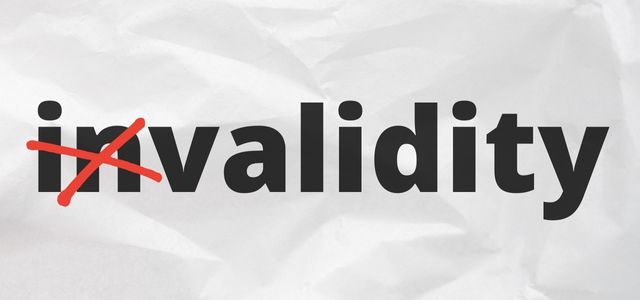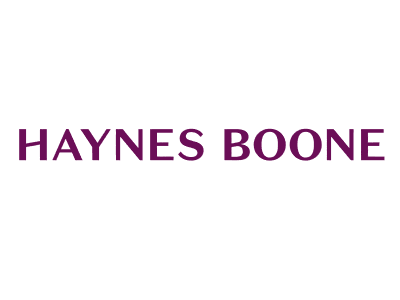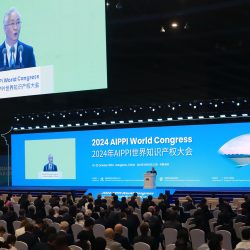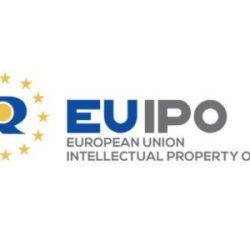An invalidity challenge to a claim may not rely upon an erroneous portion of a prior art disclosure if the error would have been apparent to one of ordinary skill in the art.[1] This article examines the current state of the law on determining whether an error in a prior art disclosure is obvious in view of the latest opinion from the U.S. Court of Appeals for the Federal Circuit: LG Electronics v. ImmerVision Inc.[2]
The In re Yale Standard for Determining an Apparent (Obvious) Error
If a typographical error would be apparent to one of ordinary skill in the art who would mentally disregard the error as a misprint or mentally substitute the error with the correct information, the error will be treated as such and will not constitute a prior art disclosure for purposes of determining patentability.[3] This is commonly referred to as the In re Yale standard, where the U.S. Court of Customs and Patent Appeals, the predecessor to the Federal Circuit, determined that the listing of CF3CF2CHClBr in a prior art reference was an obvious typographical error of CF3CHClBr and therefore the prior art did not actually disclose CF3CF2CHClBr to one of ordinary skill in the art.[4] In reaching this conclusion, the court determined that there were clear inconsistencies between figures and tables in the prior art, supported by an expert affidavit that the listing of CF3CF2CHClBr would be recognized as an obvious typographical error.[5]
The application of the In re Yale standard is fact specific and may depend on whether the error is critical to the particular invalidity analysis.
For example, in In re Garfinkel, the court found that an error in the prior art was not apparent or obvious from reading the publication, and in any event, was not critical to the invalidity analysis.[6] There, the challenged claims relate to a glass containing 5-25% Al2O3, among other elements, and the prior art disclosed a glass having 5.12% Al2O3.[7] The applicant alleged that the prior art disclosure was erroneous based on an affidavit stating that the glass used in the prior art actually contained only about 2% Al2O3.[8] The court held (1) that the prior art would still teach one of ordinary skill in the art to use up to 5.12% since the error was not apparent or obvious from reading the prior art, and (2) in the absence of proof of new and unexpected results or other evidence of non-obviousness, the prior art disclosure of glasses containing even small amounts of Al2O3 made obvious the claimed use of glasses containing Al2O3 irrespective of the percentage.[9]
Another case reached the opposite conclusion, however, with respect to the same prior art cited in Garfinkel.[10] In Corning Glass Works v. Brenner, the challenged claims relate to a glass containing 5-25% Al2O3, among other elements,[11] and the prior art disclosed a glass having 5.12% Al2O3, which was an error.[12] There was substantial evidence supporting the claims’ non-obviousness including commercial success and unexplainable results.[13] The court held that the Patent Office’s reliance upon the error resulted in the Office reaching a conclusion inconsistent with other evidence of non-obviousness.[14] The Patent Office’s acceptance of the error as a disclosure was therefore improper.[15]
LG Electronics
The dispute in LG Electronics was whether LG could rely on a transcription error in a prior art patent to invalidate ImmerVision’s patent claims.[16] In applying the In re Yale standard, the court found the transcription error to be “an obvious error of a typographical or similar nature” that, as a result, cannot disclose the subject matter.[17]
The patent claims at issue relate to a panoramic lens that compresses the center and edges of an image and expands an intermediate portion of the image. LG had petitioned the Patent Trial and Appeal Board (PTAB) to invalidate these claims based upon a U.S. patent (Tada). Tada describes four embodiments of a general lens system. Each embodiment involves a set of optical parameters. LG relied on the third embodiment in Tada’s Table 5 to render obvious the claims at issue. However, through the course of expert discovery, ImmerVision’s expert discovered that Table 5 had erroneous information. In response, ImmerVision argued that Table 5 cannot form a basis for obviousness.[18]
ImmerVision’s expert first discovered that his lens model based on the prescribed optical parameters did not match the aspheric coefficients listed in Table 5. Then, he realized the discrepancy in output image was distorted in a way in which Tada was explicitly trying to prevent. After doing more verifications to confirm that there was a significant error, he realized that the aspheric coefficients listed in Table 5 was a duplicate to the aspheric coefficients of another embodiment listed in Tada’s Table 3. He then reviewed Tada’s Japanese Priority Application and realized that the Table 5 in the Japanese Priority Application did not match the Table 5 in the U.S. patent. After doing verifications using the aspheric coefficients in the Japanese Application, he confirmed that the values in the Japanese Application were correct and that there was a transcription error in the U.S. patent.[19]
The PTAB found the aspheric coefficients in Tada’s Table 5 to be an obvious error that one of ordinary skill in the art would have recognized and corrected.[20] And because the correct aspheric coefficients in Table 5 of the Japanese Application, if relied upon, would not satisfy the language of the claims at issue, the Board ruled that the petitioner failed to meet its burden that the claims at issue would have been obvious.[21]
On appeal, the majority of the Federal Circuit affirmed.
Majority Opinion
The majority reaffirms the In re Yale standard:
[W]here a prior art reference includes an obvious error of a typographical or similar nature that would be apparent to one of ordinary skill in the art who would mentally disregard the errant information as a misprint or mentally substitute it for the correct information, the errant information cannot be said to disclose subject matter. The remainder of the reference would remain pertinent prior art disclosure.[22]
Part of the majority’s reasoning is that such an error should not prevent a true inventor of the claimed subject matter from getting patent protection.[23]
In applying the In re Yale standard, the majority agreed with the PTAB. It found that (1) several aspects of Tada’s Table 5 would alert one of ordinary skill in the art that the disclosure was an obvious error of a typographical or similar nature, (2) the inconsistency between Tada’s Tables 5 and 9 made apparent the error in Table 5’s listing of the aspheric coefficients, and (3) having identical aspheric coefficients in Tada’s Tables 3 and 5 was improbable.[24] The court thus concluded that “Tada’s Table 5 includes an obvious error of a typographical or similar nature that would have been apparent to one of ordinary skill in the art, who would have substituted it with the correct information and, thus, that Table 5 cannot be said to disclose a lens that compresses the center of image and the edges of the image and expands an intermediate zone of the image.”[25]
Dissenting Opinion
Judge Newman dissented in part.[26] She agreed with the majority that the In re Yale standard is the correct standard to apply. She, however, disagreed that the error was typographical or similar in nature because the error, unlike a spelling mistake, was not apparent to the reader and recognizing it required hours of experimentation and calculation.[27] Further, without discovering the Japanese foreign document, the correct information would not be readily apparent.[28] Therefore, unlike the erroneous chemical compound in In re Yale, the error here was not one that is readily recognized as an error.[29]
Conclusion
In view of the In re Yale standard as applied in LG Electronics, patent applicants, owners, and petitioners should be aware that an error of a “typographical or similar nature” may include errors that are not-so-easy to recognize. Further, the time and effort to discover the error is only one factor in the analysis. Reviewing the earlier cases discussed above, other factors may include how critical the error is in the invalidity analysis and whether reliance upon the error would lead to a conclusion inconsistent with other evidence of patentability.
Written by David McCombs, Eugene Goryunov, Alan Wang, Tim Hsu of Haynes & Boone[30]
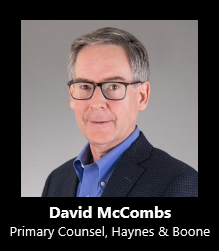
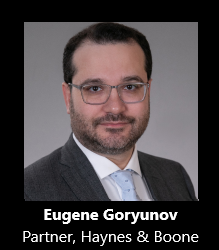

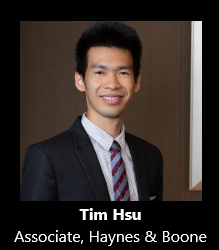
[1] See In re Yale, 434 F.2d 666 (C.C.P.A. 1970).
[2] LG Electronics v. ImmerVision Inc., No. 2021-2037 (Fed. Cir. Jul. 11, 2022).
[3] In re Yale, 434 F.2d at 669.
[4] Id.
[5] Id.
[6] In re Garfinkel, 437 F.2d, 1005 (C.C.P.A. 1971).
[7] Id. at 1006-07.
[8] Id. at 1008.
[9] Id.
[10] Corning Glass Works v. Brenner, 470 F.2d 410 (1972).
[11] Many aspects of the claims are different from those in Garfinkel.
[12] Corning Glass Works, 470 F.2d at 414-17.
[13] Id. at 418-19.
[14] Id. at 421-22.
[15] Id.
[16] LG Electronics v. ImmerVision Inc., No. 2021-2037 at 12-13 (Fed. Cir. Jul. 11, 2022).
[17] Id. at 16-17.
[18] Id. at 3-6.
[19] Id. at 4-11.
[20] Id. at 12.
[21] Id.
[22] Id. at 14 (Internal citation omitted).
[23] Id. at 14-15.
[24] Id. at 15-16.
[25] Id. at 16-17.
[26] Id. at 19 (Newman, J., dissenting in part).
[27] Id. at 19, 24 (Newman, J., dissenting in part).
[28] Id. at 24 (Newman, J., dissenting in part).
[29] Id. at 23-25 (Newman, J., dissenting in part).
[30] This article reflects only the present personal considerations, opinions, and/or views of the authors, which should not be attributed to any of the authors’ current or prior law firm(s) or former or present clients.
| MORE NEWS | | WRITE FOR OUR NEWSLETTER |


